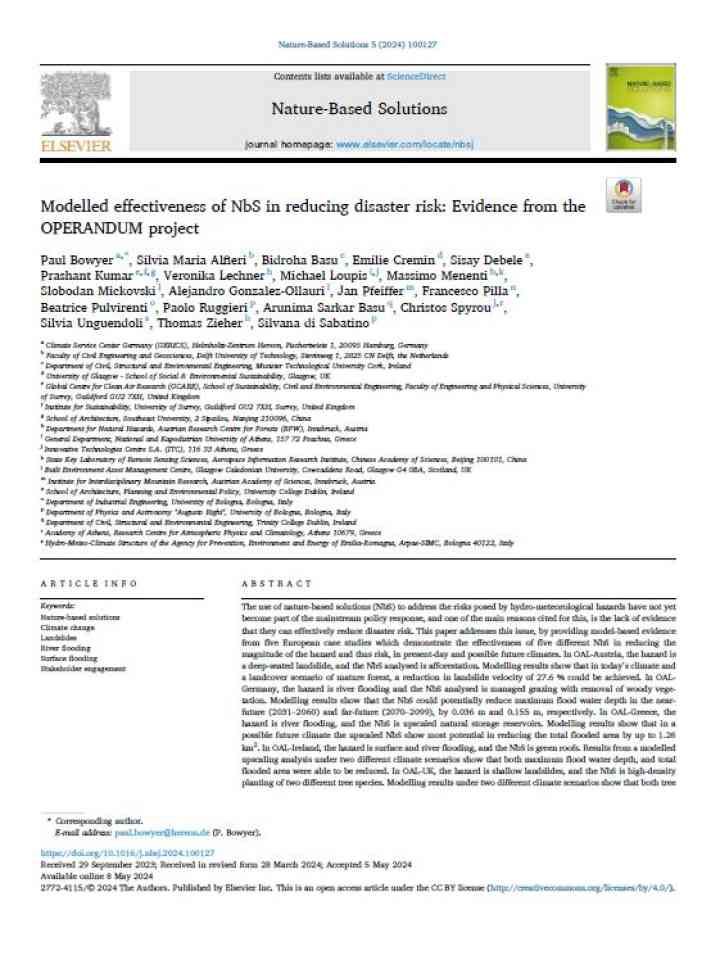Modelled effectiveness of NbS in reducing disaster risk: Evidence from the OPERANDUM project
This paper provides model-based evidence from five European case studies which demonstrate the effectiveness of five different Nature-based Solutions (NbS) in reducing the magnitude of the hazard and thus risk, in present-day and possible future climates. In OAL-Austria, the hazard is a deep-seated landslide, and the NbS analysed is afforestation. Modelling results show that in today's climate and a landcover scenario of mature forest, a reduction in landslide velocity of 27.6 % could be achieved.
In OAL-Germany, the hazard is river flooding and the NbS analysed is managed grazing with removal of woody vegetation. Modelling results show that the NbS could potentially reduce maximum flood water depth in the near-future (2031–2060) and far-future (2070–2099), by 0.036 m and 0.155 m, respectively. In OAL-Greece, the hazard is river flooding, and the NbS is upscaled natural storage reservoirs. Modelling results show that in a possible future climate the upscaled NbS show most potential in reducing the total flooded area by up to 1.26 km2. In OAL-Ireland, the hazard is surface and river flooding, and the NbS is green roofs.
Explore further
